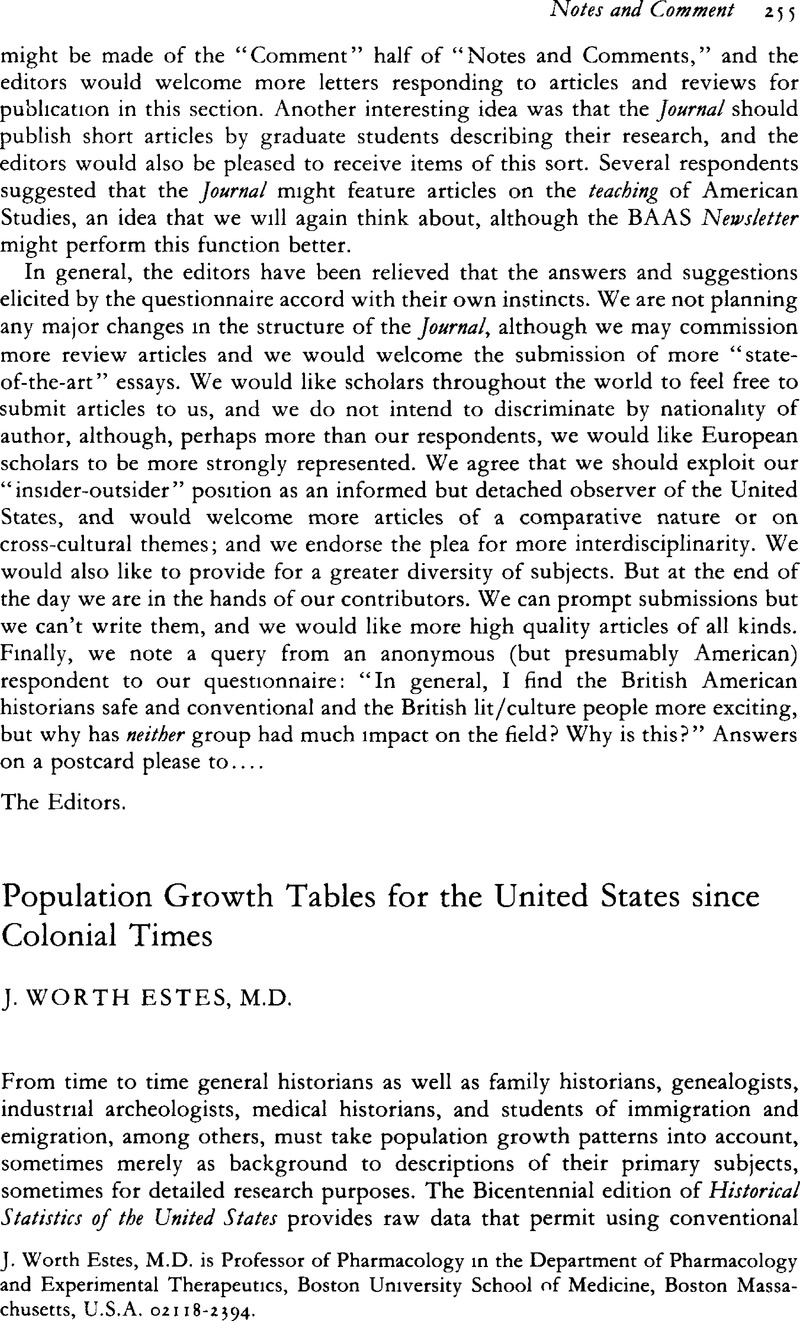No CrossRef data available.
Article contents
Population Growth Tables for the United States since Colonial Times
Published online by Cambridge University Press: 16 January 2009
Abstract

- Type
- Notes and Comment
- Information
- Copyright
- Copyright © Cambridge University Press 1987
References
1 Malthus, Thomas Robert, An Essay on the Principle of Population and a Summary View of the Principle of Population, Anthony, Flew, ed. (1798 and 1830; rpt. edn., Harmondsworth, England, 1970), 69, 120.Google Scholar
2 Wallace, Robert, A Dissertation on the Numbers of Mankind in Antient and Modern Times (Edinburgh, 1753), 3–7.Google Scholar
3 Franklin, Benjamin, The Interest of Great Britain Considered with Regard to her Colonies and the Acquisition of Canada and Guadeloupe, to which Are Added, Observations Concerning the Increase of Mankind, the Peopling of Countries, & c. (1751Google Scholar; rpt. edn., Boston, 1760), last three (unnumbered) pages.
4 Zirkle, Conway, “Benjamin Franklin, Thomas Malthus and the United States Census, ” Isis, 48 (1957) 38–42.CrossRefGoogle Scholar
5 Petersen, William, Malthus (Cambridge, MA, 1979), 56, 79, 145, 153Google Scholar; Malthus, Essay (see n. I), passim. For many graphic examples of geometrically increasing populations, see the figures throughout McEvedy, Colin and Jones, Richard, Atlas of World Population History (Harmondsworth, England, 1978).Google Scholar
6 The rate of population increase, in thousands per year, can be calculated, if desired, as 0.301 times the doubling times given in the three tables.
7 Malthus, , Essay (see n. 1), 227Google Scholar; Coale, A. J., “The Use of Modern Analytical Demography by T. R. Malthus,” Population Studies, 33 (1979), 329–32.CrossRefGoogle Scholar
8 Malthus, , Essay (see n. 1), 105.Google Scholar
9 The further changes revealed by the 1980 census have not yet been fully discussed, but preliminary analysis demonstrates that migration to the southern and western states is continuing; see: Hauser, Philip M., “The Census of 1980,” Scientific American, 245, 5 (11 1981), 53–61.CrossRefGoogle Scholar
10 Dates of admission to the Union, and areas of the states for calculating population densities, are in the American Heritage Dictionary (1969). Agricultural statistics in Historical Statistics, 1, 457, 460, 500, 510, when plotted arithmetically, show that Malthus inferred correctly that the food supply, however it is, or can be, measured, tends to increase arithmetically. Other typical confirmations include the graphs in Jensen, Neal F., “Limits to Growth in World Food Production,” Science, 201 (1978), 317–20CrossRefGoogle ScholarPubMed, and Barr, Terry N., “The World Food Situation and Global Grain Prospects,” Science, 214 (1981), 1087–95CrossRefGoogle ScholarPubMed, at least when allowances are made for improvements in agricultural technologies and for weather conditions unfavorable to food growth. Petersen (Malthus, [see n. 5], 61 is certainly correct in inferring that Malthus drew upon his training in mathematics to arrive at his famous contrast of the growth atterns of population and of food supply, not upon actual numerical data.


